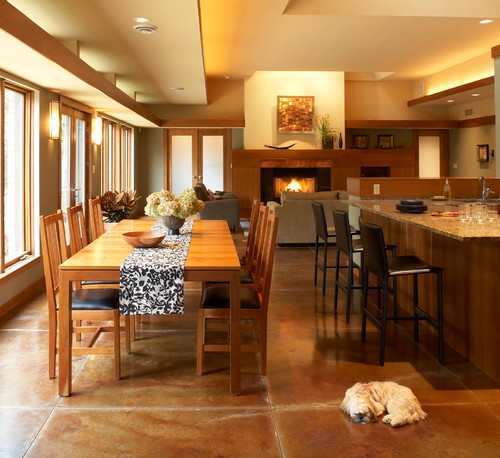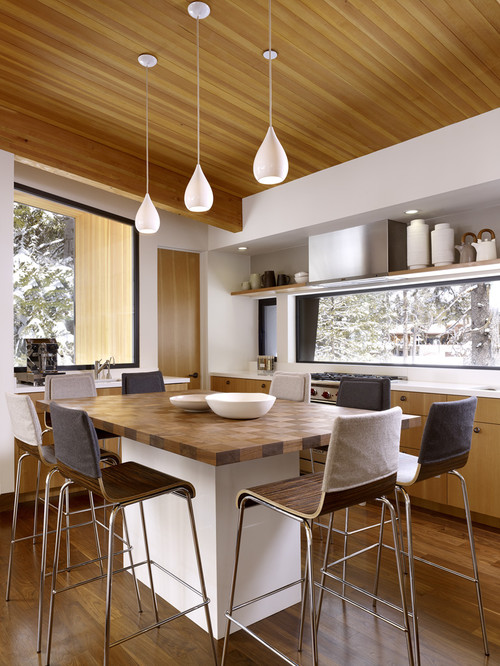Keep your home and yard safe and running smoothly as temperatures drop and activity moves indoors
Before winter weather sets in:
- Remove debris from gutters — water can back up, causing leaks and ice dams or damage to your roof and siding.
- Inspect and upgrade attic insulation and ventilation.
- Purchase a roof rake.
- Remove snow as quickly as possible after storms — use your roof rake to regularly remove snow from the roof of your home (or hire someone to do this for you).
What to do if you notice the beginnings of an ice dam:
- Carefully remove snow and ice if possible without damaging roof and gutters.
- If you have heat cables, turn them on. Heat cables cannot prevent or fully remove ice dams, but can melt enough of the ice to create a channel for water to flow out, preventing some damage.
If you plan to be away during the season (and your area gets snow), hire a service in advance to clear the snow while you are away. Some cities give tickets if you allow the sidewalk in front of your home to become impassable, because this creates unsafe conditions for pedestrians.
Steps to prevent pipes from freezing in winter:
- Insulate pipes — at least those by windows and doors, and in unheated areas of the home.
- Disconnect your hose from the outside hose bib (outside faucet).
- If prone to freezing, leave faucets dripping slightly — the theory is that running water does not freeze.
- Keep the heat set no lower than 55 degrees Fahrenheit (12.7 degrees Celsius) when you are away.
Too late? Here’s what to do if a pipe freezes:
- Turn on the tap of the frozen pipe and leave it open while treating the pipe.
- Allow warm air to flow safely to the affected area — always use any heat source (electric heating pad, blow dryer, space heater) safely to avoid potential harm and damage to your home and its occupants.
- If you’ve found one frozen pipe, check all the taps in the house — if only a drip comes out, there is likely another frozen pipe.
- If you cannot access the frozen pipe, or if your efforts to thaw it do not work, call a licensed plumber.
6. Protect entryway flooring.Between tracked-in snow, ice, road salt and sand, entryway floors can really take a beating in the winter. Increase the longevity of your flooring by using floor mats both inside and outside each entrance to your home. Provide a boot scraper or brush outside for removing excess snow, and a waterproof tray inside for placing wet shoes and boots.
7. Check your emergency supplies. With winter storms comes more potential for power outages — be prepared with fresh bottled water, shelf-stable foods, flashlights and batteries, first-aid supplies and a hand-cranked radio and smartphone charger.
8. Keep heating system running smoothly. If you notice any strange new noises coming from your heaters, or if one area of the house suddenly seems colder, have the system looked at right away, as these can be signs something is wrong. Wondering how to properly maintain your heating system? Gagne shares these tips:
- If you heat with oil, have your furnace or boiler cleaned every year.
- If you heat with gas, you can have it done every three years or so.
- Make sure to change the air filters in your furnace regularly.
- When using high-efficiency heating systems, make sure that PVC vent pipes are cleared of snow and debris.
9. Check batteries in smoke and carbon monoxide detectors monthly. This is especially important during winter, when we keep windows closed and use wood-burning stoves and fireplaces more often. Make sure you have smoke and carbon monoxide detectors in each bedroom, on each floor of the house and in the kitchen. Check detectors monthly and change batteries as needed.
- Check and repair caulking around doors and windows and anywhere something penetrates a wall, like outside faucets and air vents.
- Check weatherstripping on doors and windows.
- Seal cracks in foundation walls.
Tell us: Do you love winter, or are you counting the days till spring? Share which winter chores you adore and which you could live without in the Comments.
More
Simple Pleasures: Stocking Up for Winter
9 Ways to Boost Winter Curb Appeal









Leave a Comment
You must be logged in to post a comment.